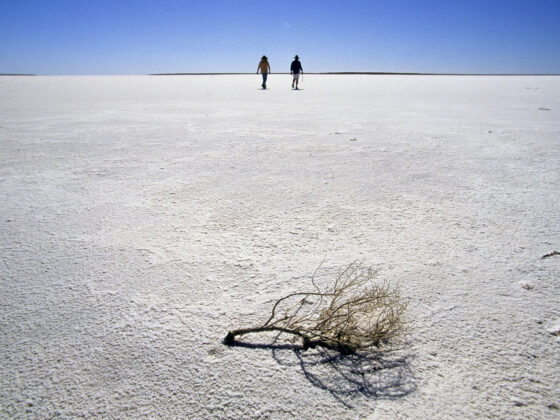The Willie Wagtail is one of the most common birds in Australia and one of the cutest too, often found flitting behind lawnmowers or running animals to catch disturbed insects.
Words by Matthew Mitton: The Willie Wagtail is a small-sized black bird with a white belly, and is widely spread throughout mainland Australia (except Tasmania). This bird can be distinguished from other similar species due to its black throat and white eyebrows. Most Willie Wagtails will grow to around 20cm (head to tail), with an average weight of around 20 grams. They live for up to 15 years.
This brave little bird gets its name from its constant tail wagging, which is seen as it searches for insects through a variety of areas from backyard lawns to farms and grasslands. They generally avoid dense areas such as rainforests. When on farms, these birds like to use both sheep and cattle to help them find flying insects. They do this by running behind the moving animal, devouring insects as they are disturbed, or by hitching a ride on the sheep or cattle, using them as a free form of transport as they search for passing insects. The diet of the Willie Wagtail consists mostly of insects. These busy birds are not picky eaters, enjoying most insects including moths, flies, butterflies, beetles, bugs, spiders and many more.
Willie Wagtails will usually interact well with humans, and nests can be found quite close to houses. Despite being mostly tolerant and accepting of humans and other species, they will become aggressive if they feel as though their territory is under threat. They will defend their area from much larger animals, even cows. Oblivious to their small stature, Willie Wagtails will chirp and chitter, diving on the intruder in a daring display of bravery. They have even been known to chase away much larger birds.
Willie Wagtail nests are generally found in tree branches and similar locations and are usually made from grasses covered in spiderwebs, with animal hair or fur on the inside of the nest. They will often reuse their nest for several years, or reuse the materials to make a new nest. Willie Wagtails lay cream-coloured eggs, speckled with grey and brown. The eggs are incubated by both parents and will hatch after 14 days. Young birds will stay with their parents until another set of eggs is ready to hatch and they may produce up to four successive clutches in a season. The breeding season usually lasts from around August to February.













